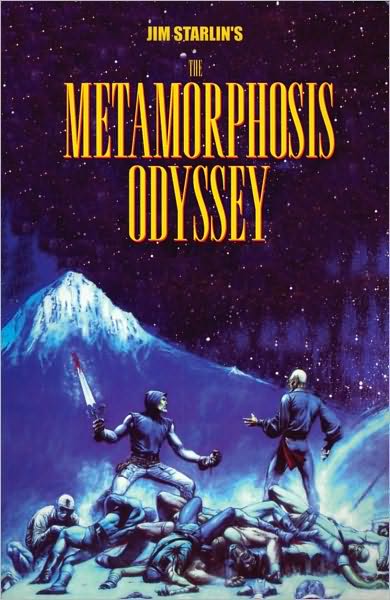In discussing this recent Youtube video arguing Star Wars (1977) suggests a setting without FTL communication, my brother and I gradually drifted over to considering some minor mysteries regarding the desert planet Tattooine. The central question is: "what exactly is Tattooine's place in the galactic civilization?" Luke tells us: "If there's a bright center to the universe, you're on the planet that it's farthest from," but is that just the restless teenager in him talking?
Canonically, Tattooine is a sparsely populated world located on the Outer Rim, though Wookieepedia suggests the whole concept of an "Outer Rim" doesn't appear in the films until the sequel trilogy. This perhaps implies it is on the edge of civilization, but it's possible that it only means the edge of Imperial (and Republican before that) control. "Sparsely populated" seems reasonable given what we see in the films and the fact it's an entire planet, particularly when we consider this is a relative sparseness compared to the more urbanized, populous worlds.
There are, however, at least two details in Star Wars arguing against Tattooine as some sort of wilderness frontier. These have to do with the Jawas and Mos Eisley spaceport.
Used Droid Salesmen
The Jawas are scavengers, and they've got a big crawler full of junk that roams the desert and picks up "gently used" droids to refurbish (a bit) and sell to farmers and rural settlements. If Tattooine is sparsely populated and droids are so expensive relative to local incomes that people have to buy the pre-owned ones Jawas sell, then where exactly do all the droids come from that the Jawas scavenge?
It's possible the demand for used droids has to do with where droids come from which makes new ones scarce. Another possibility is that droids were traditionally priced beyond the reach of rural folk of modest means, but the end of the Clone Wars lead to something of a switch back to consumer focused production in the galaxy's industry over wartime production and restored supply chains, so that the wealthy inner worlders were able to finally get that new droid they'd wanted, leading to an abundance of older models on the market, analogous to the situation with cars in the U.S. after World War II. These older models would naturally wind up in the hands of dealers like the Jawas.
Still, unless what happened to Threepio and Artoo is just an accident, it looks like they are roaming the desert picking up droids, rather than just waiting for their shipment at Mos Eisley. I think it's at least possible that the desert not infrequently turns up excess droids--and I have an idea as to why.
Scum and Villainy
Obi-Wan says of Mos Eisley: "You will never find a more wretched hive of scum and villainy." This is from a guy who knows the Emperor is a Sith Lord and was made to fight in an arena on Genosis! In the Old West idiom frontier towns are often stereotypically lawless, but I don't think Tombstone or Dodge City would deserve a description like that. Also, Tombstone and Dodge City had reasons why they were boomtooms that drew the riffraff (silver mines and the cattle trails, respectively).
Obi-Wan's description and the vibe of Mos Eisley in general suggests a pirate town like Port Royal, Jamaica ("the wickedest city on Earth.") Such towns would appear in places the law hasn't effectively reached, but close to very busy and lucrative trade routes. You wouldn't get a crime lord like Jabba rich enough to have a palace and sponsor speeder races without crime being lucrative.
Back to the Jawas and their scavenging: If pirates are often taking ships and hiding the evidence or just discarding the refuse, in the desert, well there would wind up being stuff for the Jawas to "salvage."
Tattooine On Viewscreen
I think the evidence from the movies point to Tattooine as at the edge of imperial jurisdiction, but in a well-traveled zone between the Empire and other, civilized regions controlled by other interstellar powers. It's nature as a desert world means it is less desirable for heavy colonization, but its location ensures the thriving pirate boomtown of Mos Eisley, and the existence of power strongmen benefiting from that crime.















































